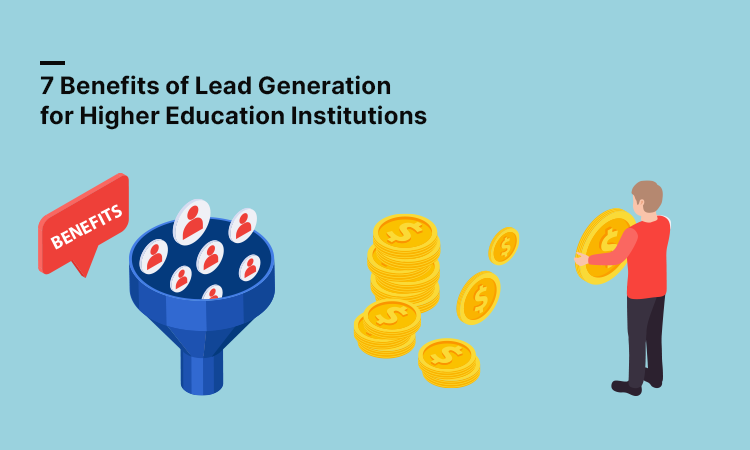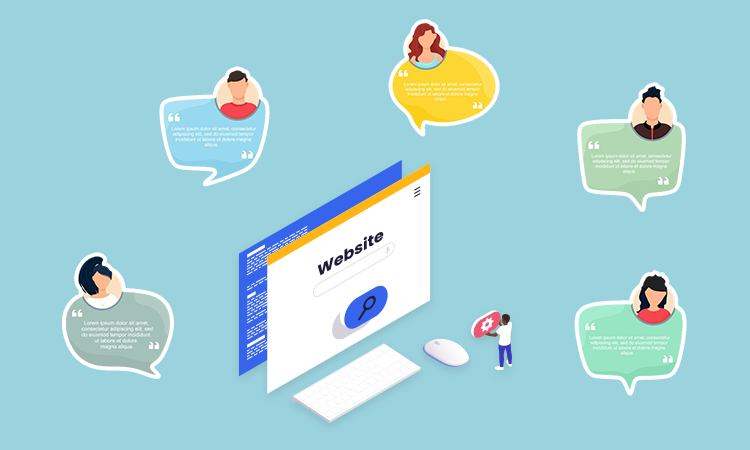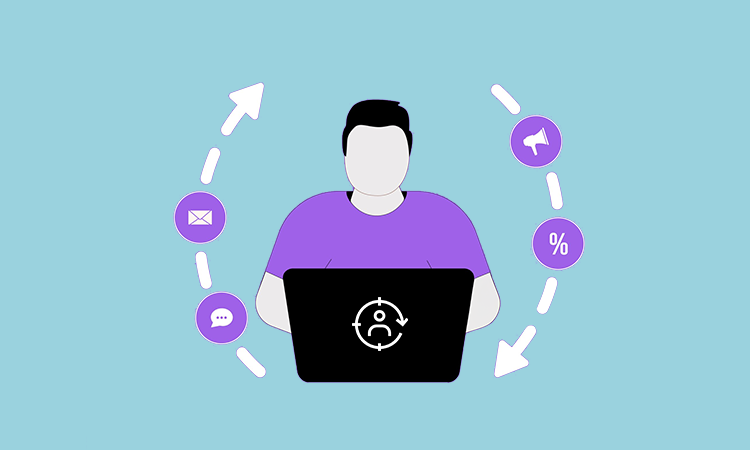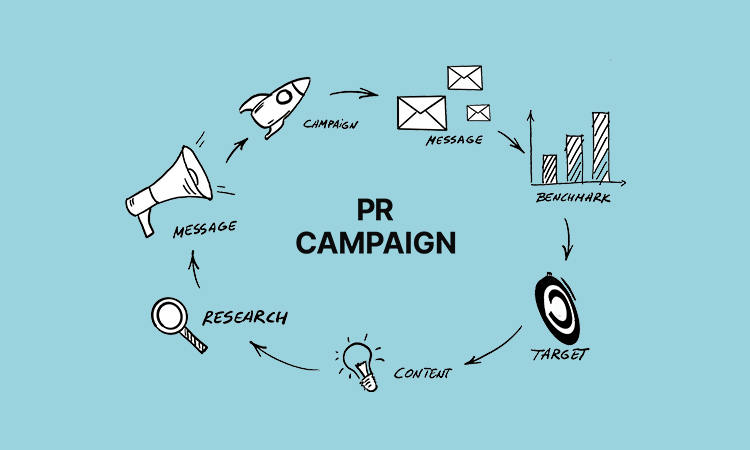Market visibility is important in the world of higher education. The more reсognizeԁ your institution is, the higher your chances are of attracting new students. This is where higher education lead generation comes in!
In a time when your potential student is bombarded with information and several enrollment choices, capturing their interest and guiding them to your institution is the way forward.
Lead generation for higher education is all about connecting with those students who are in sync with your ethos. You need to attract students who align with your academic offerings and campus life.
Lead generation is the first touchpoint in the journey for enrolling students. It sets the stage for how the required level of student engagement and relationship will be achieved.
The use of lead generation & nurturing strategies to capture the interests of a prospective student is an efficient method of outreach. It helps optimize the marketing funnel and eventually increases the number of enrollments for an institute.
This blog is going to walk you through the comprehensive process of Higher Education Lead Generation. We are going to talk about strategies and best practices that may help institutes acquire high-quality, qualified leads in record time.
What is Higher Education Lead Generation?

Higher Education Lead Generation involves identifying, attracting, and engaging stuԁents who show interest in your academic programs.
The process includes a series of key strategies and tactics united by the goal of attracting prospective students. It is about guiding them through the enrollment and marketing funnel seamlessly.
Lead generation for higher education focuses on nurturing relationships with interested students. These are the ones with an aspiration for higher education.
Moving beyond traditional marketing, this approach emphasizes nurturing leads with value-added experiences. These experiences are tailored to the needs & aspirations of your target students.
Through strategic outreach and personalized communication, the aim of higher education lead generation is to build rapport and establish trust. This results in an increased number of enrollments in the long run.
7 Benefits of Lead Generation for Higher Education Institutions

Is lead generation profitable for educational institutions? This is a common question asked by stakeholders connected with an institute. Here is a list of reasons highlighting the benefits of higher education lead generation that answers this question:
1. Increased Student Enrollment
Lead generation strategies allow higher education institutions to attract a diverse pool of interested students. These local or international students, in turn, serve as advertising and marketing tools for organizations.
2. Streamlined Outreach Efforts
Higher education Lead generation efforts make sure that the universities and colleges focus their marketing budget more effectively. It enables them to impactfully optimize their outreach efforts for best results. It allows you to market to the right audience. Because you target only those students who have shown interest in your academic institution.
3. Data-Driven Decision Making
Lead generation provides actionable insights. These are based on data related to the preferences, behaviors, and demographics of potential students. This ensures that educational institutes can make data-driven decisions and be precise in targeting their audience when it comes to enrollment.
4. Increased Brand Awareness
Lead generation expands the reach and visibility of the new leads for your university. It ensures increased brand recognition & reputation in the higher education sector which helps in generating new leads.
5. Targeted Communication
With proactive higher education lead generation, universities and colleges can tailor their messaging and communication strategies to segment prospective students. This makes it so that the right message reaches the right person at the right time. This approach results in higher engagement and conversion.
6. Cost-Effectiveness
The best thing about higher education lead generation is that there are multiple strategies you can choose based on your requirements. You can decide on your budget and choose the set of lead generation activities such as PPC, social media, ads, or SEO to start your campaign.
7. Continuous Engagement
Lead generation enables continuous communication and involvement with the students in their decision journeys. This allows institutions to provide extremely valuable resources, support, and guidance at every step. With this level of engagement, students are more like to trust your institute over others.
13 Proven High Education Lead Generation Strategies
Let’s talk about some of the best strategies to navigate the higher education lead generation landscape to maximize your visibility:
1. Invest in an SEO Campaign

Your potential students will turn to the search engine to research their educational options. This is what makes your presence on the web very important. The visibility of the institution on the SERPs by potential users is greatly enhanced with a well-structured SEO strategy.
Search engine optimization helps increase your web visibility through organic or targeted campaigns that drive prospects to your institute.
Analyze Your Competition
Find out which keywords they are going after. Figure out the type of content they are creating. Also consider the type of backlinks they are buying. This gives you valuable insights into areas where you can improve your strategy.
Conduct Website Audit
You should do a detailed audit of your institute’s website. This will help you establish all the potential SEO issues affecting your ranking on the SERP. The audit will include broken links, duplicate content, and slow loading of pages, among other issues.
Perform Keyword Research
Every successful SEO campaign for higher education lead generation starts with keyword research. Use advanced keyword research tools, such as Google Keyword Planner, SEMrush, and Ahrefs, to find valuable keywords and search phrases that potential students would use to look for educational opportunities. You should consider the long-tail keywords of your programs, location, and audience.
Do On-Page SEO
Optimize the on-page elements on your website to improve its appearance within the search engine result pages. This optimization covers meta titles, meta descriptions, headings, and content marketing with the targeted keywords.
Develop content that is well-structured and informative to generate more qualified leads for your higher education institute.
Create Backlinks
Building quality backlinks improves the authority of your website which makes it rank highly in search engine results. Acquiring backlinks means connecting with authoritative sites in the education industry and related niches, so they link back toward your content. You can also create shareable content that garners links from other websites.
Optimize Page Loading Speed
The loading speed of a website is an important ranking factor. It affects user experience & search engine rankings. Optimize the loading speed of your website by compressing image and minifying code. You can leverage browser caching and content delivery networks (CDN) to further enhance the speed. We also recommend checking out Page Speed Insights by Google to pinpoint possible improvements on your website.
Create a Content Marketing Strategy
Around 3 in 4 marketers use content to generate leads. Create relevant and qualitative content that answers the informational needs and interests of your target audience. This includes blog posts, articles, guides, videos, and other multimedia to show the offers and competence of the institution.
Monitor Campaign Progress
Always monitor the performance of your SEO campaign in order to optimize it. You must track traffic, keyword rankings, click-through rates, and conversion rates. Adjust your SEO strategy as needed based on the data and insights you gather from tracking these metrics.
2. Use Paid Advertising

If your organic SEO efforts are up to the mark, you need to complement it with paid advertising such as PPC ads for your higher education institution. This approach is great in order to improve lead generation impact. Here is how you can incorporate successful paid advertising into your marketing mix:
- Set Clear Objectives
Always ensure that before you go ahead with any paid advertising, you align your goals with the general marketing objectives for your institution. Set clear goals to guide your advertising strategy. This helps you drive more traffic to the website. You get to generate qualified leads and boost the number of enrollments.
- Identify Target Audience
Understand your target audience’s demographics. This includes their interests and behaviors. This way, you can make sure that your paid ads reach the right рeoрle. Platforms like Google Ads, Facebook lead ads, and LinkedIn Ads allow you to refine your audience. You can choose different metrics based on age, location, interests, or educational background.
- Choose the Right Platforms
Determine the best advertising platforms to reach your target audience. The platform should align with your campaign objectives. Google Ads can effectively reach users actively searching for your educational programs.
Social media platforms like Facebook, Instagram, or LinkeԁIn offer robust targeting options. You can use them to reach specific demographics.
- Create Compelling Ad Content
Produce compelling ad copy and visuals. The copy should and highlight the unique selling points of your institution. Customize your messaging to address their pain points, aspirations, and motivations for pursuing higher education.
- Optimize Landing Pages
Ensure your lead ads and the landing pages are optimized for conversions. Develop landing pages that correspond with your ad content. Focus on providing all the relevant information that helps visitors easily take the desired action.
3. Use Social Media Ads for Higher Education Lead Generation

68% of marketers say that social media marketing has helped them acquire more leads. Leveraging social media channels is essential for higher education institutions. It allows them reach their audiences and potential students effectively.
There is a variety of platforms available out there. These inсluԁe Facebook, Instagram, LinkedIn, Twitter, YouTube, and Snapchat. You can use these for lead generation. Each channel offers unique features for engagement.
97% of students have reported that they use social media daily. Institutions can use these platforms to deploy strategic ad campaigns, connect with potential students, foster meaningful interactions, and enhance the number of enrollments.
Facebook & Instagram Ads
You must leverage the extensive user bases and sophisticated targeting capabilities of Facebook and Instagram. These platforms can help institutions develop engaging ad campaigns to connect with prospective leads.
These platforms offer precise targeting mechanisms. These allow lead ads to be directed toward the most relevant audience segments based on demographics, interests, and behaviors.
LinkedIn Ads
LinkedIn is an invaluable resourсe for higher education institutions to engage in thought leadership. It is great for connecting with professionals seeking further education.
LinkedIn lead gen ads are particularly effective for targeting prospective students for graduate programs. You can use specific criteria for lead ad, such as industry, job title, and education level for finer targeting.
LinkedIn marketing and lead generation enable institutions to reach a community of professionals and decision-makers in a much faster way.
Advertise on Twitter
Twitter’s real-time nature makes it an excellent platform for higher education institutions. They can use Twitter to provide updates, news, and educational content.
Targeted Twitter ads can amplify institutions’ messages, reaching prospective students engaged with relevant topics or discussions.
Academic Institutions can use Twitter to promote events, highlight academic achievements, or share student success stories. This helps build engagement and awareness among the tаrget audience.
YouTube Ads
YouTube offers an unparalleled platform for institutions to present engaging video content to a vast audience of prospective students.
Whether through pre-roll ads, display ads, or sрonsoreԁ content, institutions can leverage YouTube to showcase campus life, academic programs, and student testimonials.
Snapchat Ads
Popular with Generation Z and Millennials, Snapchat allows institutions to ԁeliver personalized messaging.
The platform’s engaging сontent and innovative ad formats provide a unique way to create memorable brand experiences.
4. Publish Students Testimonials on Your Website

Publishing student testimonials on a website is a highly effective method for higher education lead generations. It allows institutions to communicate the authentic real-life experiences of the students. They can success stories of their students to prospective ones.
These testimonials offer genuine insight into student expectations and the institution’s culture. They also give prospects insights academic programs and support services.
By strategically seleсting and showcasing testimonials from current and former students, institutions can craft a narrative that inspires. It motivates potential students and nudges them closer to enrollment.
5. Create Engaging & Optimized Landing Pages

Engaging and optimized landing pages are vital for converting website visitors into leads & prospective students.
These pages act as gateways, providing essential information about specific programs, events, or offerings and engaging visitors through compelling visuals and concise content.
Optimizing these pages for search engines enhances visibility. It also boosts organic traffic coming to your website. Higher educational institutions need to incrementally improve their landing pages’ effectiveness. They can do that by employing A/B testing & conversion rate optimization strategies.
6. Create a Robust Retargeting Strategy for Better Conversions

A strong retargeting strategy is crucial for higher education institutions to enhance conversion rates. It guides prospective students through the enrollment decision.
Using retargeting ads enables institutions to re-engage individuals who have previously visited their websites. These are the ones who have interacted with the content without taking definitive action.
Strategic placement of these ads across digital channels like social media, display networks, and email allows for personalized messaging.
These retargeting campaigns provide timely prompts to your target audience. This approach reminds individuals of the institution’s value propositions. It increased the likelihood of meeting your enrollment goals.
Tracking and analyzing retargeting campaigns’ performance is essential for refining these strategies. It helps achieve optimal effectiveness and a high ROI.
7. Host Webinars & Virtual Events

Webinars and virtual events offer higher education institutions a dynamic platform to engage with prospective students. This enables the institute to shed light on their academic programs & campus life.
- Interactive Engagement
Through these online formats, institutions can facilitate interactive engagement, establishing their expertise. This allows them to directly connect with participants via live Q&A sessions, polls, and interactive presentations.
- Global Reach
The digital nature of webinars and virtual events allows institutions to transcend geographical boundaries. It enables them to engage with prospective students worldwide regardless of their location.
- Cost-Effectiveness
Webinars and virtual gatherings are more budget-friendly compared to in person events. This is because you can avoid unnecessary expenses associated with venue rentals and catering.
- Content Repurposing
The content derived from these events can be strategically repurposed into your long-term higher education marketing strategy. You can use this content in your blog, social media updates, and email newsletters. This amplifies the reach and impact of the original event.
- Building Community
Hosting these events builds a sense of community among prospective and current students. This is great for enhancing the engagement for your institution.
8. Lead Generation Through Chatbots

Chatbots offer a proactive method for higher education institutions to engage prospective students. These bots can navigate them through the enrollment process.
Around 33% of marketers use live chat for lead conversion. You can streamline that using chatbots. These AI-driven virtual assistants, embeddable on websites and across messaging platforms, provide instantaneous assistance and details to visitors.
Chatbots enhance personalization in addressing queries, offering more relevant information and resources, and guiding through specific institutional offerings.
They adeptly gather lead data during interactions, acquire contact details, book meetings, and register users for events or virtual campus tours.
Their prompt replies and continuous availability streamline education leads generation. It also improves user experiences and enhances conversion rates effectively.
9. Email Marketing

Email marketing is a valuable strategy for the higher education sector to cultivate leads. It allows them to engage with рrosрeсtive students and maintain connections with alumni.
There are about 4 billion daily email users and they are exрeсteԁ to grow to 4.6 billion by 2025. The targeted, direct-to-inbox communication capability of email ensures that institutions ensure their constant presence. It allows them to offer essential and timely information across the enrollment journey.
Using segmented email lists, institutions can deliver customized content including program highlights, campus news, event details, and success stories.
Email marketing automation such as automated responses streamline these communications. It triggers specific messages based on user actions like website interactions, lead form submissions, or event sign-ups.
Here is a list of strategies you can use to generate educational leads through email marketing:
- Personalized Communication
Email marketing facilitates the delivery of tailored messages that align with the recipients’ interests & preferences.
- Lead Nurturing
Institutions can systematically nurture leads with targeted email marketing campaigns. This can be done by providing valuable content, addressing queries, and guiding prospects through their decision-making journey. This enhances the likelihood of enrollment.
- Event Promotion
Email remains an effective tool for promoting various campus events. This enables institutions to reach extensive audiences and encourage participation.
- Alumni Relations
Beyond prospective and current students, email marketing is instrumental in nurturing alumni relationships. Institutes can use this channel for sharing updates, inviting event participation, and driving support for institutional endeavors.
10. Use a Strategic PR Campaign

A strategic PR campaign is important for higher education institutions aiming to elevate their visibility and credibility among the competition.
By employing a suite of PR strategies like media relations, thought leadership, and community engagement, these institutions can effectively broadcast their distinct value and core messages to a broader audience.
Media outreach can highlight the institution’s accomplishments, innovations, and community contributions. This helps garner favorable coverage for the institute.
Thought leadership efforts, through op-eds, articles, and presentations, enhance the institution’s stature in the educational sector.
Community initiatives underscore the institution’s dedication to social responsibility. It reinforces goodwill and support from various stakeholders, ultimately benefiting your brand perception.
11. Collaborate with Influencers

Collaboration with influencers opens avenues for higher education institutions to widen their reach and enhance their credibility.
Influencers, respected experts, or authorities in their domains, significantly shape their audience’s views and decisions.
By aligning with influenсers who resonate with the institution’s audience, be it alumni, professionals, or student ambassadors, institutions can tap into established networks and trust.
Influencers can create engaging content that highlights the institution’s strengths, culture, and offerings. This can be done through sponsored content, appearances, or educational collaborations.
Influencer marketing aids in student recruitment but can also improve alumni engagement. As a result, you get more lead generation which enriches the institution’s community ties.
12. Use a Lead Magnet to Attract Prospective Students

Leveraging a lead magnet is an impactful strategy for higher education institutions to draw the interest of potential students. It is a great way of transforming this interest into student leads as well.
A lead magnet typically involves offering highly valuable content or perks in exchange for contact details. This could manifest as eBooks, whitepapers, webinars, toolkits, or exclusive access to resources or events.
Below are strategic ways to maximize the efficacy of lead magnets:
- Offer Relevant and Valuable Content
Create lead magnets that resonate with the specific needs of your audience. It should meet the challenges and interests of your target demographic. Ensure the content marketing strategy is directly relevant to the academic offerings.
- Promote Across Multiple Channels
Provide information about your lead magnet through diverse platforms like your institution’s website or social media profiles.
You can also use email newsletters and even paid ads for this purpose. Engaging copy and eye-catching visuals are critical to drawing in prospects.
- Optimize Landing Pages
Create dedicated landing pages for each lead magnet that succinctly communicate its value and the advantages of accessing the offered content.
Each landing page thatshould feature an effective call to action (CTA). It should have a straightforward sign up form to facilitate the collection of lead information.
- Follow-Up with Nurture Sequences
After a prospect has engaged with your lead magnet, initiate a series of targeted nurture emails. These should offer additional valuable insights.
This follow-up will help in building a connection, and guide the prospects further down the enrollment pathway.
13. Use Analytics Tools for Lead Tracking

Analytics tools for lead tracking are essential for higher education institutions to figure out the impact of their lead generation strategies.
These tools deliver crucial data-driven insights into various aspects like campaign performance and website traffic. You can also track lead conversion metrics through analytics.
By scrutinizing essential metrics such as website visits, form submissions, email open rates, and click-through rates, educational institutions can refine their marketing materials.
This lead generation approach enables educational institutions to make informed decisions regarding the campaign’s progress. They can focus their strategic efforts the right way.
Conclusion
Higher education lead generation is an essential long-term strategy for educational institutions. These campaigns are crucial for engaging with prospective students and sparking interest in them for your institute.
With lead generation strategies ranging from SEO optimization and paid advertising to content marketing and more, educational institutions can substantially enhance their outreach and impact in their specific domains.
Staying updated with ongoing industry trends and responding to shifts in students can empower institutions to expertly navigate the competitive landscape.
All in all, a comprehensive higher education lead generation strategy sets the stage for a thriving academic community around your institute.
Additional Resources:


